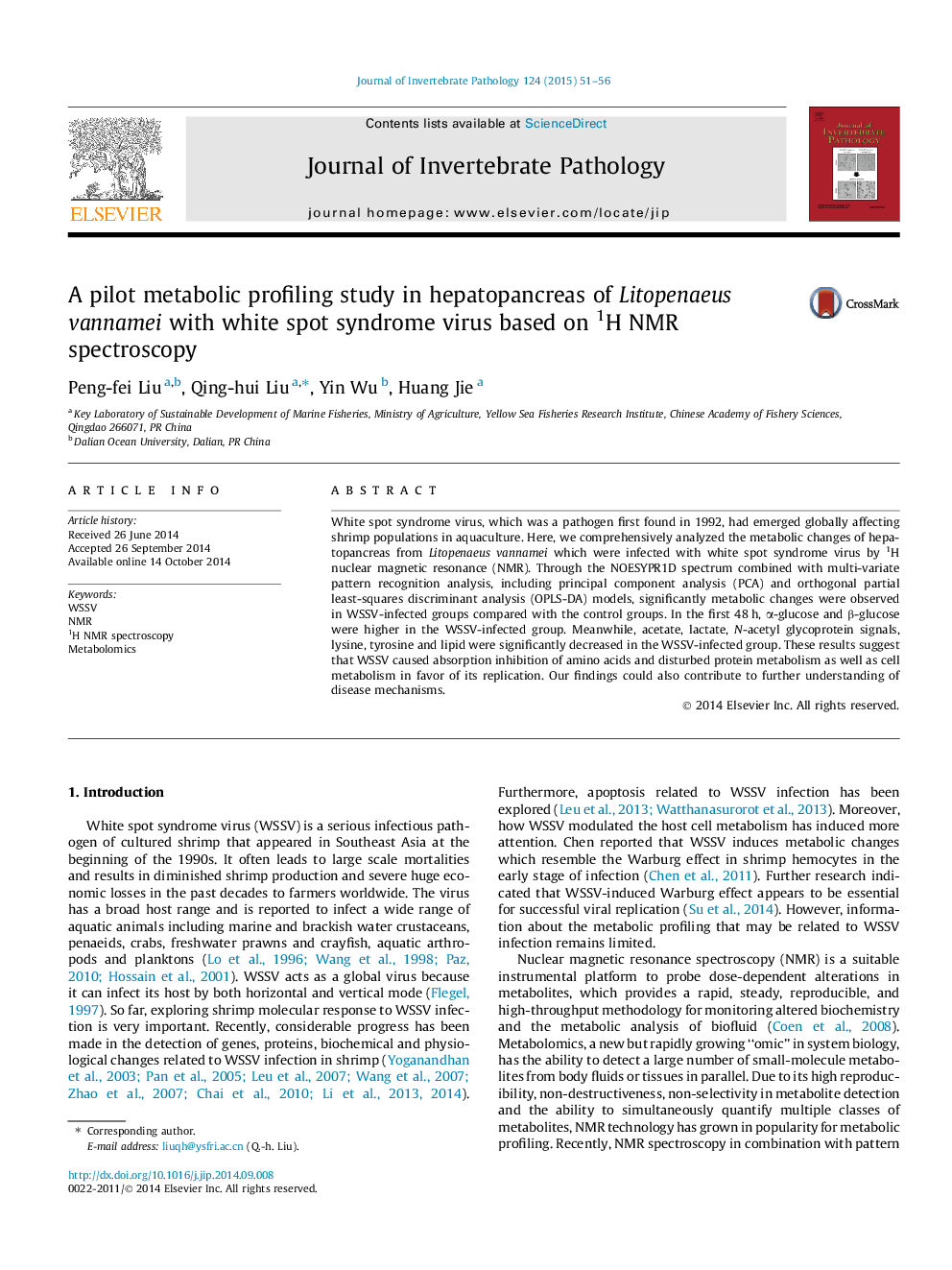| Article ID | Journal | Published Year | Pages | File Type |
|---|---|---|---|---|
| 6389507 | Journal of Invertebrate Pathology | 2015 | 6 Pages |
â¢WSSV caused metabolic changes of hepatopancreas from Litopenaeus vannamei.â¢Î±- and β-glucose were higher in the WSSV-infected group at 48 hpt.â¢Acetate, lactate, lysine, tyrosine and lipid were decreased.â¢WSSV disturbed protein metabolism and cell metabolism in favor of its replication.
White spot syndrome virus, which was a pathogen first found in 1992, had emerged globally affecting shrimp populations in aquaculture. Here, we comprehensively analyzed the metabolic changes of hepatopancreas from Litopenaeus vannamei which were infected with white spot syndrome virus by 1H nuclear magnetic resonance (NMR). Through the NOESYPR1D spectrum combined with multi-variate pattern recognition analysis, including principal component analysis (PCA) and orthogonal partial least-squares discriminant analysis (OPLS-DA) models, significantly metabolic changes were observed in WSSV-infected groups compared with the control groups. In the first 48 h, α-glucose and β-glucose were higher in the WSSV-infected group. Meanwhile, acetate, lactate, N-acetyl glycoprotein signals, lysine, tyrosine and lipid were significantly decreased in the WSSV-infected group. These results suggest that WSSV caused absorption inhibition of amino acids and disturbed protein metabolism as well as cell metabolism in favor of its replication. Our findings could also contribute to further understanding of disease mechanisms.
Graphical abstractDownload full-size image
